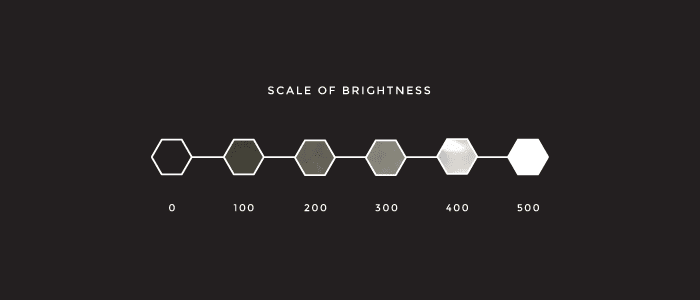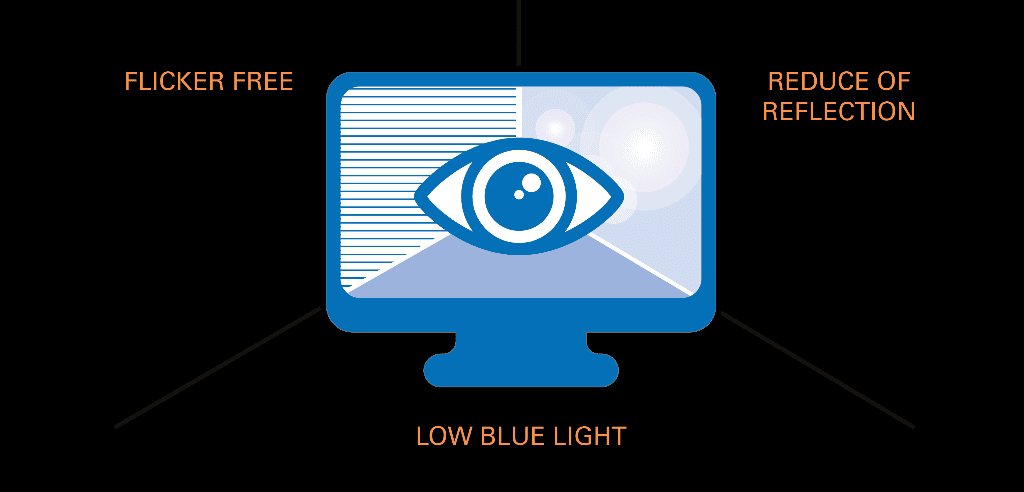At first glance, QLED and OLED TV look very similar—especially since they share the same three letters. However, anyone looking to purchase a new TV should know that these products are like day and night.
With plenty of new models in the upcoming year, there’s no better time to clear up the confusion. In this article, we’ve defined QLED and OLED, and then compared them so that you can figure out which brand is right for you.
What is QLED?
QLED stands for Quantum Light-Emitting Diode. QLED TV is just like a regular LED TV, except it uses tiny nanoparticles called quantum dots to super-charge its brightness and color. The technology was initially introduced by Sony in 2013, but shortly after that, Samsung began selling its QLED TVs and established a licensing partnership with other manufacturers, which is why we now see several TV brands offering QLED TVs.
As cool as quantum dots are, a QLED TV still produces light more or less the same way as a regular LED TV — by using a backlight made up of hundreds (or in some cases thousands) of LEDs, which sits behind an LCD panel. It’s these LEDs that give LED (and QLED) TV its name.
The LCD panel — essentially millions of tiny shutters that open and close too quickly to see — in conjunction with colour filters, create the picture you see by letting just the right amount of light and colour escape and reach your eyes. It’s a clever system, but it relies on a combination of dimming the LED backlights and using the shutters to block the remaining light to produce on-screen blacks, and it doesn’t always succeed. We’ll discuss this more below.
Get an Extended Warranty for your QLED TV
Enjoy non-stop entertainment with GoWarranty
What is OLED?
OLED stands for Organic Light-Emitting Diode. Somewhat surprisingly, the “Light Emitting-Diode” part of that name has nothing to do with an LED backlight as it does with QLED and LED TVs. Instead, it refers to the fact that every single pixel in an OLED TV is also a teeny, tiny LED light — but one that is incredibly thin and can produce both light and colour in a single element. In other words, OLED TVs don’t need a backlight because each pixel produces its own light. If you want to impress your friends, you can use an industry term for these kinds of displays: “Emissive.”
There are several advantages to this design, but most would agree that when it comes to OLED TVs, the biggest advantage is the superb black level that can be achieved. Unlike a QLED or LED TV that must dim its backlight and block what remains for dark scenes, an OLED TV simply turns off the pixel. When the pixel is off, it emits no light and no colour, making it as dark as to when the TV itself is turned off. It’s also a lot easier to make a flexible OLED screen, which is why OLED pioneer LG has developed several OLED TVs that roll up (or down) to disappear entirely.
Only one company currently makes OLED TV panels: LG Display. It sells those panels to its sister company, LG Electronics, which uses them to build some of the very best TVs you can buy. But LG Display also sells OLED panels to companies like Sony, Philips, and Panasonic, which is why you’ll see OLED TVs from these companies too. Even though the panels themselves are essentially identical, the image processing that Sony, LG, and others do is proprietary, so you’ll still see significant differences in picture quality from one OLED TV to another.
What about mini-LED?
In late 2019, TCL started selling the 8-Series — the very first QLED TVs powered by a mini-LED backlighting system. Mini-LEDs are tiny when compared to regular LEDs. This means that a QLED TV that could normally only accommodate hundreds of LEDs, can now accommodate tens of thousands of mini-LEDs. The result? Way more control over backlighting, leading to black levels that come far closer to OLED than any non-OLED display has ever achieved.
Mini-LED is still in its infancy, but if TCL and other companies continue to improve it (which they no doubt will) the technology has the potential to greatly improve QLED picture quality with pricing that should be considerably less than OLED.
QLED vs. OLED
Now that you know what all those letters stand for, and what they mean in terms of display technology, let’s compare QLED to OLED in the categories that matter most when buying a TV: Brightness, contrast, viewing angles and other notable performance considerations, like response time and lifespan — all important factors when you’re shelling out up to $6,000 for a top-of-the-line TV.
Black levels and contrast

QLED TVs (ahem) by contrast, are forced to dim their LED backlights and block the remaining light, something that is very hard to do perfectly. It can trigger something called “light bleed,” as the light spills onto what’s supposed to be a black section of the screen.
Contrast is the difference between the darkest part of an image and the brightest part. If a TV can deliver a truly black dark portion, it doesn’t have to make the bright parts quite as bright to achieve good levels of contrast. That’s why, when it comes to black levels, OLED reigns as the undisputed champion — because of its ability to go completely black when it needs to.
But is it noticeable? Definitely. If you’re watching an intense action movie and two characters are running through a parking lot at night, for example, you may notice a slight glow on parts of the scene that are supposed to be pitch black, or in the letterbox bars at the top and bottom of the screen while watching a movie on a DVD.
As we highlighted earlier, mini-LED backlights are one way QLED TV makers are trying to improve this situation. It has real potential, but we’re not quite ready to declare it an OLED-killer.
For now, OLED comes out on top; if a pixel isn’t getting electricity, it doesn’t produce any light and therefore stays totally black.
Brightness

QLED TVs have a considerable advantage when it comes to brightness. Because they use separate backlights (instead of relying on each pixel to create its own light) these LED backlights can be made incredibly, achingly bright. Add a quantum dot’s ability to maximize that light by producing brighter hues in the colour spectrum without losing saturation and you’ve got a display that is more than bright enough to be seen clearly in even most brightly lit rooms.
OLED panels can’t compete on a pure brightness basis. Their light-emitting individual pixels simply can’t produce the same amount of light. In a darkened room, this isn’t a problem. In fact, we’d argue it’s preferable because OLED can achieve the same contrast with less brightness, making dark-room viewing a less retina-searing experience. But in well-lit environments, or where lots of daylight streams in through windows, QLED TVs are more visible — especially if you’re playing HDR content under these conditions.
Color space
OLED once blew all the competition out of the water in this section, but the use of quantum dots in QLED TVs have allowed it to inch forward in terms of colour accuracy, colour brightness, and colour volume — according to Samsung, which claims that a wider range of better-saturated colours at extreme brightness levels is an advantage.
While there’s no denying the fact that QLEDs deliver fantastic colours, we have yet to witness better-saturated colours at high brightness levels deliver a real advantage in normal viewing situations — so we’re going to declare it a draw for now, since colour is subjective. We’ll need to see some tangible evidence to declare QLED a winner.
Response time, input lag, and refresh rate

Response time refers to the time it takes for a pixel to switch from one state to another. The faster the response time, the crisper the image, especially during fast-action scenes. Though there is likely speed of response time beyond which the human eye is incapable of telling a difference, we know from standardized measurements that OLED TVs are way faster — orders of magnitude faster than QLED TVs.
Typical QLED response times vary between 2 and 8 milliseconds, which sounds pretty good until you realize that OLED’s response time is about 0.1 millisecond. Yup, it’s no contest.
Input lag, on the other hand, refers to the delay between taking an action (say pressing a button on a game controller) and seeing the result of that action on-screen. As such, input lag is really only a concern for gamers — it doesn’t have a noticeable effect on passive viewing of content at all. Moreover, the amount of input lag you experience has little to do with one display technology over another, but more to do with how much image processing is happening on your TV behind the scenes. Both QLED and OLED TVs can achieve very low levels of input lag if you turn off all extra video processing or simply use the TV’s Game Mode, which effectively does the same thing.
Refresh rate is another category that will inherently matter more to gamers than casual viewers. It refers to the number of times per second the TV updates what it’s showing on-screen. Under normal circumstances, a TV will use a refresh rate of 60Hz or sometimes doubles that — 120Hz. And as long as your video source uses one of these rates consistently (which virtually all TV shows and movies do), you’ll never notice a problem.
But some games running on consoles or PCs use what’s known as VRR or Variable Refresh Rate. If your TV doesn’t support VRR, it can cause some unwanted side-effects like screen-tearing when used with VRR games.
You can find VRR models in both OLED and QLED TVs, and 2020 will see many more come to market. But for now, only LG’s OLED TVs offer G-Sync support — a proprietary version of VRR created by Nvidia. If you’re a PC gamer who wants a big-screen gaming experience, this is a strong reason to look at LG’s latest OLED TVs.
Given OLED’s unbeatable superiority in response time and refresh rate, it owns this category.
Viewing angle

With QLED screens, the best viewing angle is dead centre, and the picture quality diminishes in both colour and contrasts the further you move side to side, or up and down. While the severity differs between models, it’s always noticeable — despite TV makers’ best efforts to eliminate the issue.
OLED screens, for comparison, can be viewed with no luminance degradation at drastic viewing angles — up to 84 degrees. Some QLED TVs have improved in terms of viewing angle, with anti-reflective layers helping, but OLED maintains a clear advantage. So if you like to arrange family screenings for your favourite movies, and want to make sure there isn’t a bad seat in the house, an OLED TV is best for you.
Lifespan
LG says you would have to watch its OLED TVs five hours per day for 54 years before they fell to 50% brightness. Whether that’s true remains to be seen, as OLED TVs have only been out in the wild since 2013. QLED is even newer, but its source of backlighting — the LED — has a long and proven track record. For that reason — and that reason only — we’ll award this category to QLED.
Extended the Life Of Your TV
Enjoy non-stop entertainment with GoWarranty
Screen burn-in
We include this section begrudgingly.
Despite persistent concerns, the reality is that the effect will not be an issue for most folks — especially for those with a QLED TV since QLED isn’t susceptible to burn-in. OLED, on the other hand, is, but you would have to be extremely unlucky for it to happen to your TV, even if you left a static image on it all day and night — repeatedly.
But before we go any further, let’s throw some context into the mix.
The effect we’ve come to know as “burn-in” stems from the days of the boxy CRT TV when the prolonged display of a static image would cause that image to appear to “burn” into the screen. That occurred when the phosphors coating the back of the screen glowed for extended periods, causing them to wear out.
That same issue can occur with OLED TVs because the compounds that light up degrade over time. If you burn a pixel long and hard enough, you will cause it to dim prematurely and ahead of the rest of the pixels, creating a dark impression — but you would have to essentially abuse the TV to achieve this result.
Even the “bug” (or logographic) that certain channels use disappears often enough, moves a few pixels every few minutes or is made clear to avoid causing burn-in issues. You’d have to watch ESPN all day every day (for many days on end) at the brightest possible setting to cause a problem, and even then it still isn’t very likely.
Not long ago, QLED appeared to be the only display that was suitable for long-term use as a digital picture frame, with Samsung’s The Frame TV acted as the — ahem — poster child. But at CES 2020, LG announced that an OLED TV could be used for this purpose too, with its GX Gallery Series.
So while the potential for burn-in on an OLED TV is there, and since QLED TVs aren’t susceptible to burn-in at all, they win this fight by a technicality.
Power consumption
As you’re now very much aware, OLED panels don’t require a super-bright backlight. Those backlights consume a fair amount of power, which means OLED TVs are inherently more energy-efficient. They also emit less heat than QLED TVs.
Eye Comfort
In today’s viewing age, it’s possible to spend hours staring at TV screens with few breaks in between. Eye fatigue is a real symptom of the act, and it’s usually caused by excessive blue light production. LCD-based sets tend to show more intense blue light than anything, and this is true even in scenes that don’t feature gobs of the shade. Go too far, and your irritable eyes could eventually lead to sleeplessness, which itself can contribute to a whole range of health problems in the intricate workings of the human body. That’s why some OLED makers — most notably LG — are now seeking Ocular Guard certification for their panels.

Created by German safety testing firm TÜV Rheinland and previously marketed under the less-exciting “Eye Comfort Display” moniker, Ocular Guard certification tests a range of elements in TV panels to determine whether they’re too harsh on the eyes. “Among others, the requirements of high dynamic range, white balance, colour accuracy, wide colour gamut, total reflection, indirect reflection, flicker-free, blue light management, helpful instructions on correct installation and user suggestion must be met,” reads the entry at its certifications database.
In theory, OLED TVs should offer better overall eye comfort than QLED and any other LCD-based screen, because OLED produces significantly less blue light than LED-backlit QLED TVs. It’s nothing a special pair of lenses can’t handle, but if you want to ensure you have the safest viewing experience possible that doesn’t require purchasing new glasses, OLED is your champ.
Price

Once upon a time, this category would be handily won by QLED TVs, but OLED TVs have come down in cost, and since we’re talking all-premium here, comparable QLED TVs cost about the same (or more, depending on the size). 2020 will be an interesting year, especially for the U.S market. We’ll see more OLED TVs from companies like Vizio and Philips, which should put more pressure on lowering prices, while at the same time TCL’s mini-LED QLED TVs will push from the opposite direction — improving the performance you can expect from less-expensive displays.
The Conclusion
Both of these technologies are impressive in their own ways, but we’re here to pick a winner, and for the moment, it’s OLED. With better performance in the categories that most people will notice while watching TV shows and movies, it’s the best picture quality you can buy.
QLED comes out on top on paper, delivering a higher brightness, longer lifespan, larger screen sizes, and lower price tags. OLED, on the other hand, has a better viewing angle, deeper black levels, uses less power, and might be better for your health. Both are fantastic, though, so choosing between them is subjective — QLED is the better all-rounder, but OLED excels when you can control your room’s lighting.
The fact is, you can’t go wrong with either. That is, of course, until the next generation of display technology comes along. Mini-LED technology, for instance, is looking like a promising way for QLED TVs to deliver better black levels.

